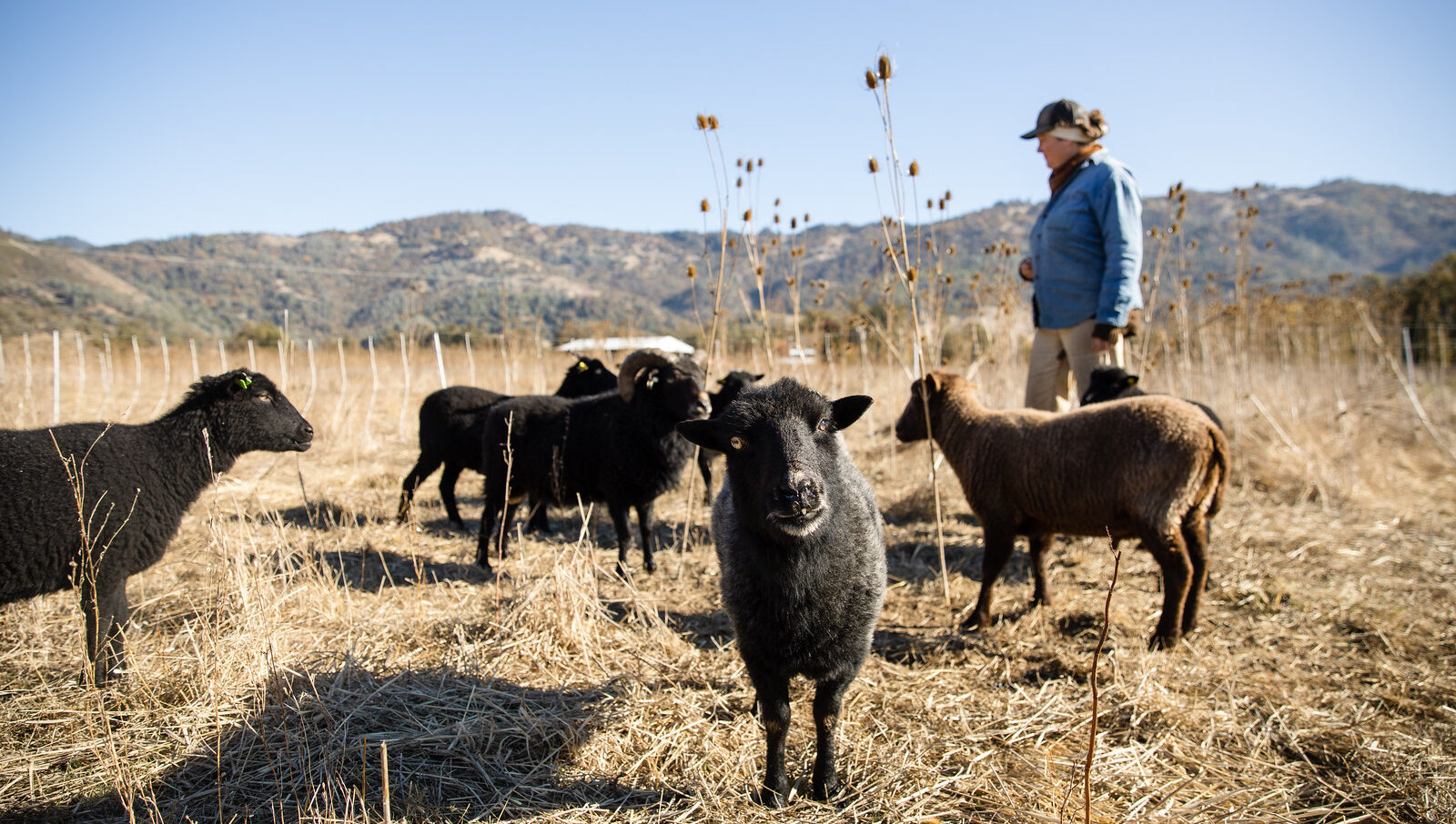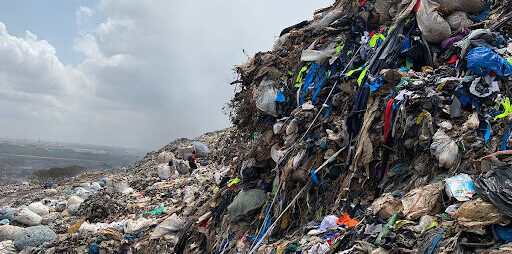
Have you ever followed a story about an important bill or policy, only to quickly get overwhelmed or lose track of where it stands in the legislative process? Confession: We have too. It’s easy to get overwhelmed by policies — the details, the impact, the politics — and then discouraged by the process.
We’re here to give you hope (and encouragement) to keep paying attention. Every day our local, state, and federal governments are making critical decisions about investments, regulations, land-use laws, and more. These decisions have economic, environmental, and social outcomes and largely determine how our textile economies will affect ecosystems, workers, and our communities’ well-being.
We rounded up four influential pieces of current legislation that we think everyone working towards nature-based and equity-centered textile systems should be aware of. We recognize this list is far from comprehensive and encourage you to consider how policies like the ones listed below might be taking shape on the ground where you live. Consider this your jumping-off point to explore similar legislation in your state and local governments and start thinking about what you might advocate for to advance a more just and regenerative textile future.

The FABRIC Act: Fashioning Accountability and Building Real Institutional Change (U.S. Federal legislation)
In 2022, the Fashioning Accountability and Building Real Institutional Change (FABRIC) Act became the first federal bill aimed at protecting American garment workers from wage theft. Introduced in the Senate by Senator Kirsten Gillibrand (NY) and in the House of Representatives by Carolyn Maloney (NY), the FABRIC Act has the potential to protect nearly 100,000 American garment workers and incentivize domestic apparel production.
The FABRIC Act has four main components:
- to end “piece rates” as a base pay (the practice of paying workers per garment piece rather than hourly — a practice that has resulted in widespread wage theft or payment far below minimum wage across the industry),
- to promote transparency via a nationwide garment industry registry,
- to hold brands and retailers alongside manufacturers accountable for workplace wage violations, and
- to incentivize domestic manufacturing through grant funding and tax credit programs.
The proposed federal legislation was reintroduced in 2023 and is currently in the Senate Finance Committee for study and in the House Ways and Means and Education and Labor Committees for study. If passed, the bill would help revitalize the clothing industry in the United States while providing critical protection for garment workers.
In recent years, lawmakers in various states have taken steps to address labor problems in the fashion industry. California successfully passed S.B. 62 (Durazo) in 2021, with the strong leadership of the Garment Worker Center, which eliminated the piece rate in California and introduced new measures to hold brands accountable for labor violations committed by their contractors. In New York, the amended Fashion Sustainability and Social Accountability Act (Fashion Act), currently under consideration in committee, aims to set targets for transparency and accountability, pushing fashion companies to reduce emissions and improve human rights impacts across their supply chains. When combined with the FABRIC Act, these bills represent one of the most substantial policy developments in the United States regarding labor in the clothing industry.
Learn more about the FABRIC Act

The Farm Bill (U.S. Federal legislation)
The Farm Bill is a landmark bill that has been shaping American agriculture and food systems since 1933. The Farm Bill has a roughly five-year timeline but impacts almost every American on a daily basis by influencing what kind of agricultural products are grown and how. The far-reaching bill encompasses food and nutrition assistance, farm income support, conservation initiatives, rural development, beginning farmer programs, and more.
The previous Farm Bill — The Agriculture Improvement Act of 2018 — expired in September 2023, and lawmakers are negotiating the current bill. Fibershed is especially interested in the Farm Bill’s immense potential to establish a more integrated approach to food and fiber production systems. The Farm Bill represents the most sweeping bill in United States agriculture and a critical opportunity to see our food and fiber systems as a whole.
Another reason to pay attention to the Farm Bill is that it sets an important framework for on-farm conservation programs, providing billions of dollars for voluntary conservation practices and technical services. Farmers and ranchers interested in implementing carbon farming practices (like those participating in Fibershed’s Climate BeneficalTM Agriculture programs), get a boost when the Farm Bill prioritizes support for farming methods that mitigate climate change and build agricultural resilience.
Learn more about the Farm Bill and specific recommendations and opportunities for the Farm Bill to better integrate holistic support for both food and fiber systems.

Extended Producer Responsibility and Textile Recovery Legislation (feat. California bill SB 707, Newman)
The mounting issue of textile waste and overconsumption in the fashion industry disproportionately burdens under-resourced communities (particularly in the Global South). Many of these communities are suffering from the impacts of vast amounts of harmful textile waste exported to ‘receiving countries’ without appropriate infrastructure or financial resources. The resulting human and environmental health consequences require global accountability to hold producers of these products responsible. Extended Producer Responsibility (EPR) offers a framework that can shift responsibility to textile producers to address the inequitable impacts of growing textile waste.
Although a relatively new term in the U.S., EPR has a long history abroad, especially in the European Union, where EPR programs originated. EPR is an important environmental policy tool for managing and reducing waste by developing stewardship programs for producers to take responsibility for the end-of-life phase of their products. EPR policies can incorporate take-back programs, textile design and material considerations, repair and recycling, and accountability for final disposal.
In 2008, France became the first country to enact a textile EPR law. Many countries across the EU followed suit or are currently developing textile EPR policies.The initial form of many textile EPR programs has received criticism for not establishing sufficient incentives/penalties, data collection, reporting and enforcement capacity to address fundamental issues in circularity, hazardous materials, plastic waste, and harms to communities receiving textile waste. Earlier this year, the Or Foundation released a groundbreaking position paper, Stop Waste Colonialism, that outlines key recommendations for effectively moving textile EPR forward with a lens of equity and accountability.
The Textile Recovery Act of 2023 (SB 707, Newman) was introduced in California to facilitate the collection, repair and recycling of used textiles. If passed, the bill will establish an EPR program in California for textiles that requires producers to develop stewardship programs with mandated performance goals, offering a new model for data collection and reporting in textile EPR. The legislation would require financial support to processors of recovered textiles including repair, as well as public education, utilizing state agency oversight to ensure transparency and enforcement.
When appropriately devised and implemented, EPR policies could incentivize alternatives to linear production and waste practices, demand transparency, and fairly compensate under-resourced communities dealing with the consequences of textile waste.
Learn more about Extended Producer Responsibility
To learn more about the EPR policy being proposed in California, we encourage you to explore the California Product Stewardship Council’s website. If you live in California, you can sign on to support the legislation here.

European Union Textile Policy
There is a wide-ranging set of new policies and laws currently being developed in the EU to address issues in the textile and fashion industry and to directly counter the growth of ‘fast fashion’. As these policies are refined and adopted over the next several years, they have the potential to shape industry practice and textile policy across the globe.
In the EU, the European Commission develops legislative proposals to be voted on by the European Parliament and the Council of the EU. In March 2022, the European Commission published an EU Strategy for Sustainable and Circular Textiles, outlining priorities and a proposed legislative agenda to address critical concerns within the textile and fashion industry. Emerging from the blueprint of goals and priorities outlined in the Strategy, the European Commission is currently drafting at least 16 pieces of legislation that will affect how fashion companies are held responsible for the environmental impacts of their clothes and other textile products.
Priorities included in the EU Textile Strategy are textile waste recovery, regulation of eco-labels in an attempt to combat greenwashing, and banning destruction of unsold goods. Some of the specific pieces of legislation that are being updated or drafted include:
While the EU Strategy and the legislation it is driving outline ambitious and important goals, concerns are being raised within the natural fiber industry and among advocates who want to see fast fashion more effectively addressed alongside a full accounting for the impact of synthetic fibers and fiber treatments in textiles. These voices have been highlighting that currently proposed legislation does not yet include labeling to acknowledge microplastic emissions from synthetic textiles and generation of plastic textile waste, or uphold a vision of circularity grounded in renewable and non-polluting materials. Along with other allied organizations and partners, Fibershed has been advocating for incorporating targeted EPR with robust fee structures modulated for products with lower or no negative environmental impacts in new policies, as well as collecting and using data on actual textile waste streams to inform textile policy.
Several pieces of these EU policies have proposed utilizing the Product Environmental Footprint (PEF) methodology, although Fibershed and others have expressed concerns about the methodology in its current form. The Make the Label Count Campaign is working to highlight how PEF can be amended to better uplift fair and credible labeling to incentivize better product development and design.
Learn more about Make the Label Count.
Across the world, advocates are calling on lawmakers to increase investments in regional fiber systems, protect farmworkers and garment workers at the frontline of change, and develop a bold vision for a circular economy. Together, we can call on our representatives to advance this shared vision for regional fiber systems that generate lasting prosperity for our local economies and ecosystems.
